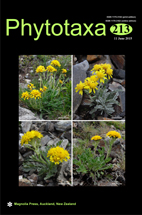Abstract
A new ascomycete species, Bambusicola loculata, inhabiting decaying bamboo, is introduced based on morpho-molecular studies. Bambusicola loculata is characterized by immersed, dark, stromatic and loculate ascostromata, bitunicate, cylindrical-clavate asci and 1-septate, hyaline, narrowly fusiform ascospores, surrounded by an inconspicuous mucilaginous sheath. Maximum likelihood and Bayesian analyses of combined LSU, SSU, RPB2 and TEF1 gene sequence data as well as morphological characters show that our new taxon belongs to Bambusicola, Bambusicolaceae. The new species is compared with other morphologically and phylogenetically similar species.

